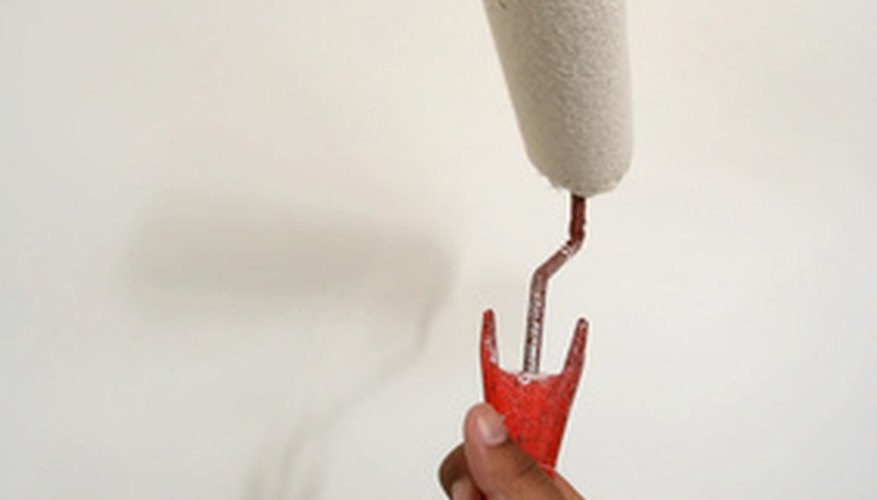Oriented Strand Board (OSB) can prove difficult to paint because the surface of the board is not meant for painting. To get paint to adhere to an OSB surface, you must prepare it adequately and use the correct types of primer and paint to ensure proper adhesion.
OSB Defined
Solid sheets of OSB, a more cost-effective alternative to plywood, incorporate thousands of 3- to 4-inch strands of solid wood glued together. Used in construction in the same way as plywood, OSB covers houses' frames. Though it is sold as an alternative to plywood, many local building departments do not allow the use of OSB.
Clean the Surface
OSB surfaces are usually filled with sawdust from the cutting and installation process. To be able to paint properly on OSB, you must use a broom to sweep all dust from the OSB surface. Focus on the cracks and edges, where the majority of the dust accumulates. For best results, vacuum all the corners -- especially the corner where the OSB connects with another board.
- OSB surfaces are usually filled with sawdust from the cutting and installation process.
- For best results, vacuum all the corners -- especially the corner where the OSB connects with another board.
Prime the Surface
Use an oil-based primer for best results. A water-based primer can cause the OSB surface to swell and will not properly adhere to the surface. Apply a smooth, even coat of oil-based primer with a paint roller. Use a paintbrush to prime the trim and any areas you did not prime with the roller. Allow the primer to dry for at least six hours before applying a second coat of primer. The primer will prepare the OSB surface so paint can adhere to the surface.
- Use an oil-based primer for best results.
- A water-based primer can cause the OSB surface to swell and will not properly adhere to the surface.
Paint the Surface
Use an exterior water-based paint for best results. Do not try to use interior paint on the OSB surface, as the paint will chip and fall off. Use a paintbrush to paint the trim and corners. Paint the rest of the surface with a paint roller, applying an even coat. Allow the paint to dry for at least six hours before applying the final coat. Check to ensure the final coat of paint is smooth and even for a perfect finish. Wait 24 hours after painting before putting anything on the surface.
- Use an exterior water-based paint for best results.
